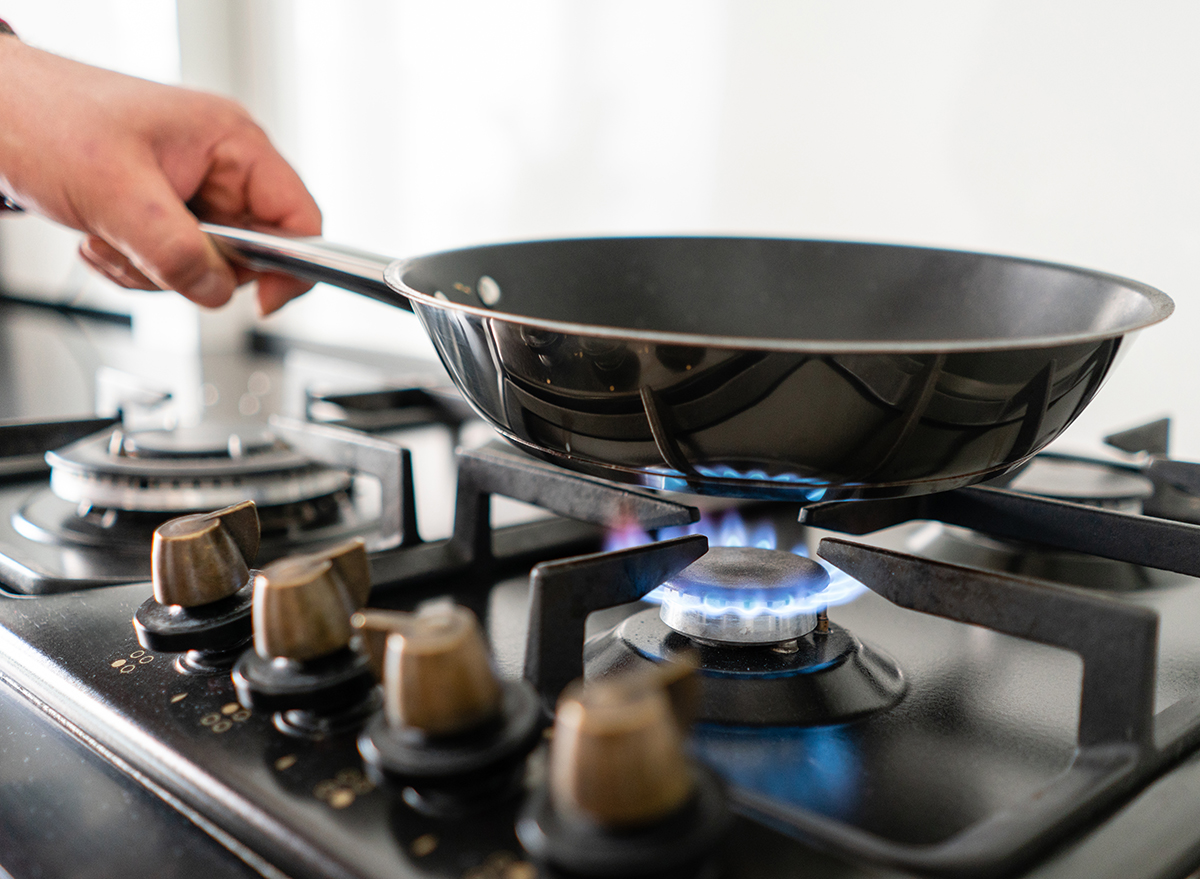Exactly What to Do If You Burn Yourself in the Kitchen

There are moments where we are rushed to cook (and eat) dinner because we have too many things booked for the evening, and as we know, hastened movements can lead to careless mistakes. Let’s say you’re stirring a big batch of spicy paella in your cast-iron skillet, but when you go to touch the handle, you instantly remember that you forgot to protect your hand with an oven mitt, or wrap a towel around the piping hot handle beforehand. That sharp, intense, sudden pain signifies a burn, and now it’s time to take action so that your skin can begin healing. So, how do you treat a burn you get in the kitchen, the right way?
Burn specialist at The Ohio State University Wexner Medical Center, Amalia Cochran, MD, recently wrote an article about this and shared some insightful tips on how to treat a burn you might fall victim to while cooking.
What should you do immediately after you burn yourself on a hot pan?
In the article, Cochran says that the first thing you should do after burning yourself in the kitchen is to run cold water over the burn. You never want to cool recently burned skin with ice, as that could damage the tissue. You will also want to remove any clothing from the affected area.
Now it’s time to try and see just how bad the burn actually is.
How can you tell if your burn is minor or severe?
Here’s how Cochran describes each severity of burn:
- First-degree burns: These burns are basically like a sunburn where the skin turns red and it hurts, but it doesn’t blister or peel.
- Second-degree burns: This type of burn blisters and sometimes can even peel on its own, revealing pink, juicy skin. They are more painful than first-degree burns.
- Third-degree burns: These burns can blister and peel, but the skin underneath looks white and dry. These burns can be very painful, but if the nerve is damaged, they may not hurt at all.
How do you treat a minor burn? What about treating a more severe burn?
In her article, Cochran says that first-degree burns can be treated at home. She says taking an over-the-counter anti-inflammatory such as ibuprofen is one such option if you find the pain to be bothersome. Another option would be to apply aloe vera to the affected area. A second-degree burn, on the other hand, can be much more serious—like if you accidentally dumped boiling hot water on your leg or foot.
“If the second-degree burn involves more than 20 percent of the body in adults or more than 10 percent of the body in children or the elderly, you’ll definitely want to seek medical care,” Cochran said in the article.
It’s important to sanitize the resulting blisters if any happen to pop, too. Remember, with this type of burn, your skin is likely going to blister. An antibiotic ointment should be applied to the area and covered with a loose, sterile bandage. Cochran says these types of burns eventually heal on their own, but others may be candidates of skin grafting, which would be determined by a doctor. A third-degree burn is the worst of them all and should always be seen by burn center specialists because these often require a skin grafting.
“With third-degree burns, there’s almost always going to be scarring. The scar severity is going to vary from person to person. The two things that impact scarring are how much inflammation is associated with the wound, which is related to how long it’s open, and the other thing is genetics,” Cochran explained in the article.
Slow down while cooking so you can prevent a painful burn.